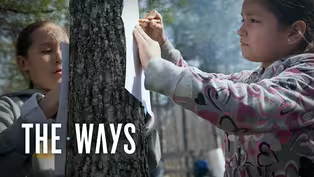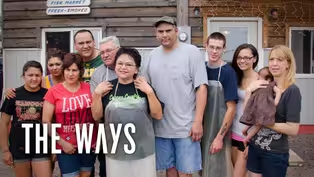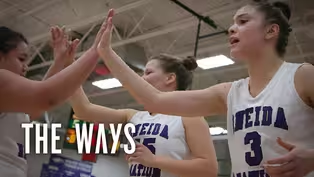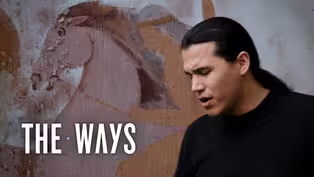The Ways
Powwow Trail
Special | 4m 46sVideo has Closed Captions
Dylan Jennings of the Bad River Band of Lake Superior Chippewa gives insight into powwows.
Contemporary powwows bring together Native Americans from many different Nations, providing opportunities to gather and celebrate. Learn how Dylan Jennings, a member of the Bad River Band of Lake Superior Chippewa, dances the Men’s Traditional dance, which for him, mimics hunting movements.
Problems playing video? | Closed Captioning Feedback
Problems playing video? | Closed Captioning Feedback
The Ways is a local public television program presented by PBS Wisconsin
Educator resources with standards alignment and extension activities are available on the PBS Wisconsin Education website.
The Ways
Powwow Trail
Special | 4m 46sVideo has Closed Captions
Contemporary powwows bring together Native Americans from many different Nations, providing opportunities to gather and celebrate. Learn how Dylan Jennings, a member of the Bad River Band of Lake Superior Chippewa, dances the Men’s Traditional dance, which for him, mimics hunting movements.
Problems playing video? | Closed Captioning Feedback
How to Watch The Ways
The Ways is available to stream on pbs.org and the free PBS App, available on iPhone, Apple TV, Android TV, Android smartphones, Amazon Fire TV, Amazon Fire Tablet, Roku, Samsung Smart TV, and Vizio.
More from This Collection
The Ways is a collection of language and culture stories from Wisconsin Native communities. Featured in this compilation: Lady Thunderhawks, Waadookodaadiing, Living Language, Powwow Trail, Prayers in a Song and Lake Superior Whitefish.
Video has Closed Captions
A collection of language and culture stories from Wisconsin Native communities. (26m 49s)
Video has Closed Captions
Waadookodaadiing educators integrate sugaring traditions for Ojibwe language learning. (4m 47s)
Video has Closed Captions
Ron Corn Jr. hopes his daughter will be a first-language Menominee speaker. (5m 8s)
Video has Closed Captions
The Petersons are part of a long tradition of commercial fishing in Lake Superior. (3m 51s)
Video has Closed Captions
Jessica House of the Oneida Nation leads the high school basketball team by example. (3m 22s)
Video has Closed Captions
Tall Paul of the Leech Lake Band of Ojibwe raps about language and Native identity. (4m 2s)
Providing Support for PBS.org
Learn Moreabout PBS online sponsorship- Dylan Jennings: Sometimes it gets hard to balance these two worlds.
There's different responsibilities that I hold at school.
There's different responsibilities that I hold for the Powwow Trail.
I'm a junior at UW-Madison.
I come from the Bad River Band of Lake Superior Ojibwe.
["Electric Pow Wow Drum" by A Tribe Called Red] [vocable singing] - Announcer: All right, don't go away gentlemen.
- Dylan: A powwow is a social gathering.
This is like our way of bringing our whole Native community together.
- Announcer: Okay, I believe we are ready for our first round entry.
So we are gonna ask those of you that are able to please rise, remove the covers off your head, to pay respects not only just to our Stars and Stripes, but to the original flag of this continent, our Eagle Staffs.
- Dylan: The veterans play a huge role because they went to battle for us.
They went to battle for our people, and they always have.
Powwows are used as a means to educate people.
That's why they're so open to the public and everything.
A lot of people classify Native Americans as you know, "Oh, they're all Indians."
Well, no, you know.
We're all from different nations that are all really, really different.
We all have different languages.
We all have different ways of life.
And we're completely different.
Just from being on the Powwow Trail, you get to learn so much about different Native nations.
When I was just a little guy, I'd watch those men's traditional dancers, and they always had a big impression on me.
I always saw them as almost like the protectors of the powwow.
[vocable singing] It's almost like I'm hunting, especially when you do the sneak up.
You're out there looking for you prey or for your Waawaashkeshi, we call it.
That's our word for deer.
I started singing with Midnite Express a few years ago.
Those people on that drum are my family.
[vocable singing] Sometimes, like when it's not a contest song, I'll get to look out there and see all those feathers out there, moving and bobbing with the beat, people just jamming out, and that's a great feeling.
[drumming and vocable singing] ["Electric Pow Wow Drum" by A Tribe Called Red] When you're dancing, you're dancing for the ones that can't dance anymore.
That's what they say.
You dance hard so the ones that are watching that can't dance or the ones that aren't able to make it to the powwow can feel those feelings from here.
I really try to encourage younger-- I call them little brothers on the Powwow Trail.
That's another reason I dance and sing, is to help motivate these young ones to carry on our traditions.
I really feel that I was put here on this earth to help pass things on.
I want to see these traditions, these ways, passed down 'til I'm gone, and on.
Support for PBS provided by:
The Ways is a local public television program presented by PBS Wisconsin
Educator resources with standards alignment and extension activities are available on the PBS Wisconsin Education website.



















